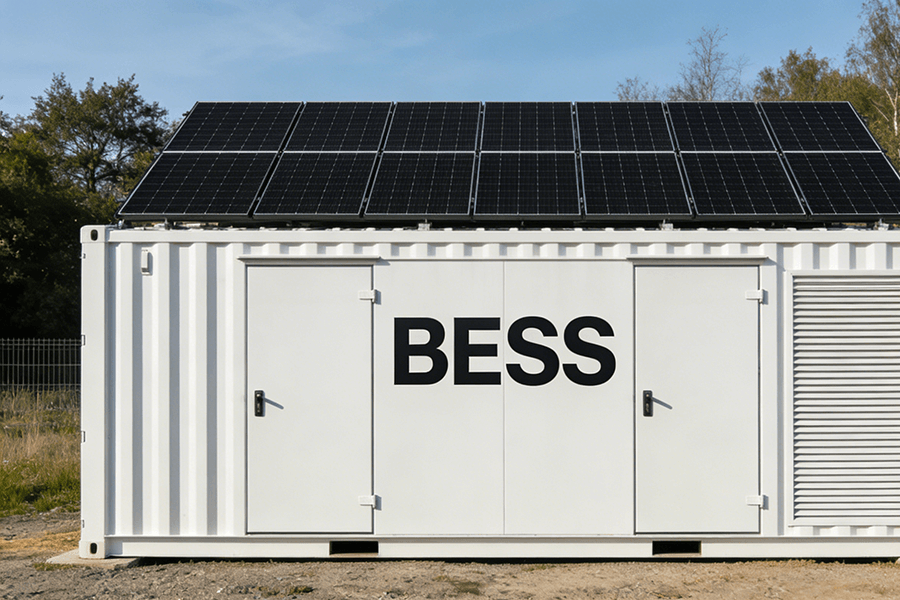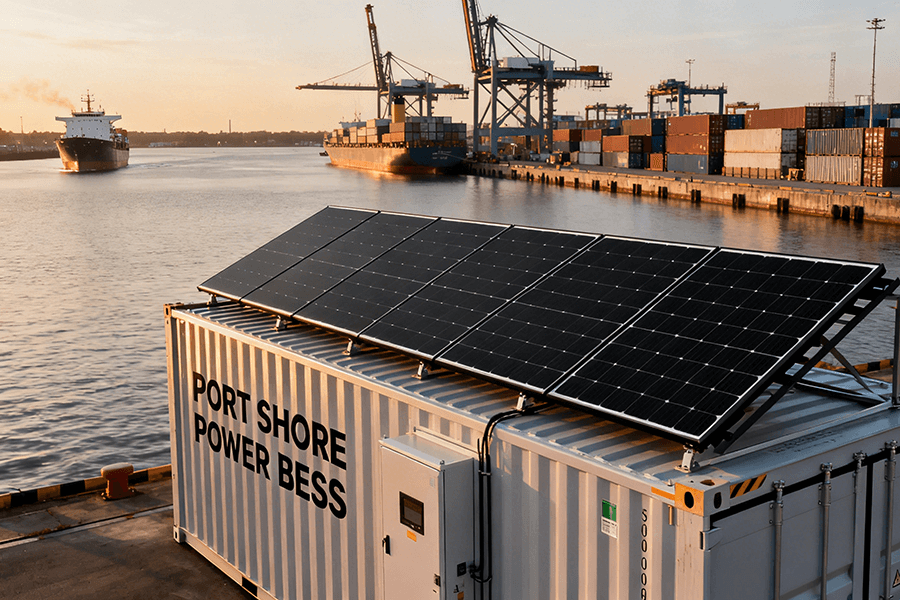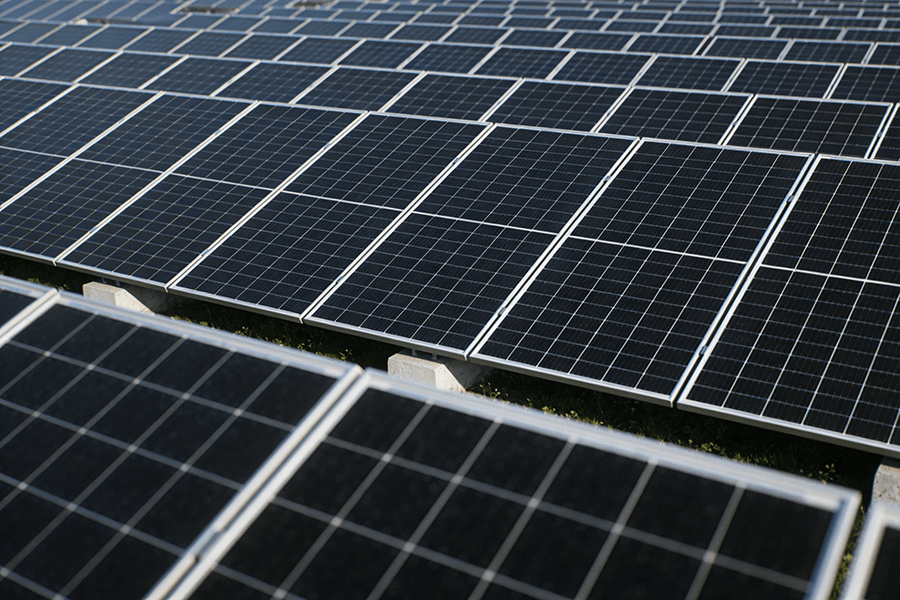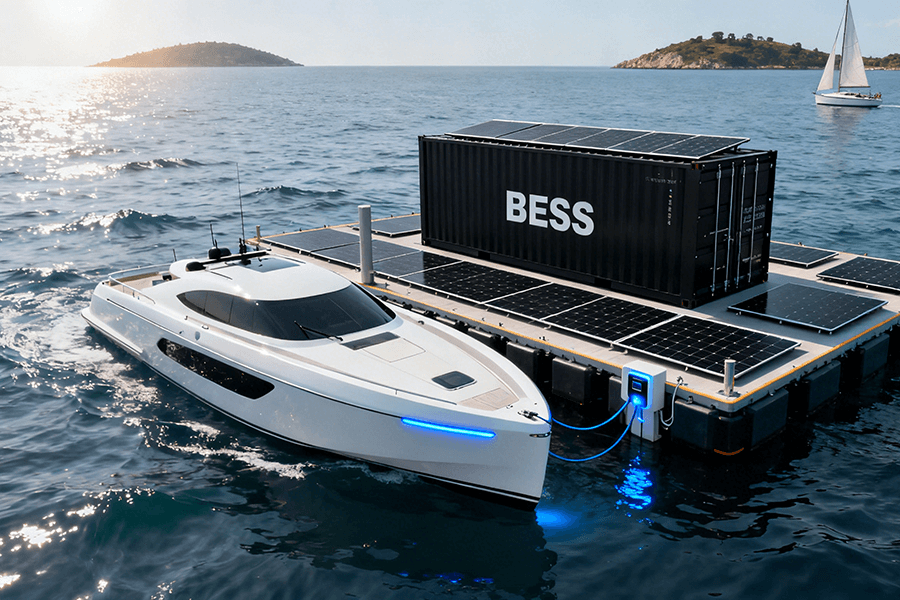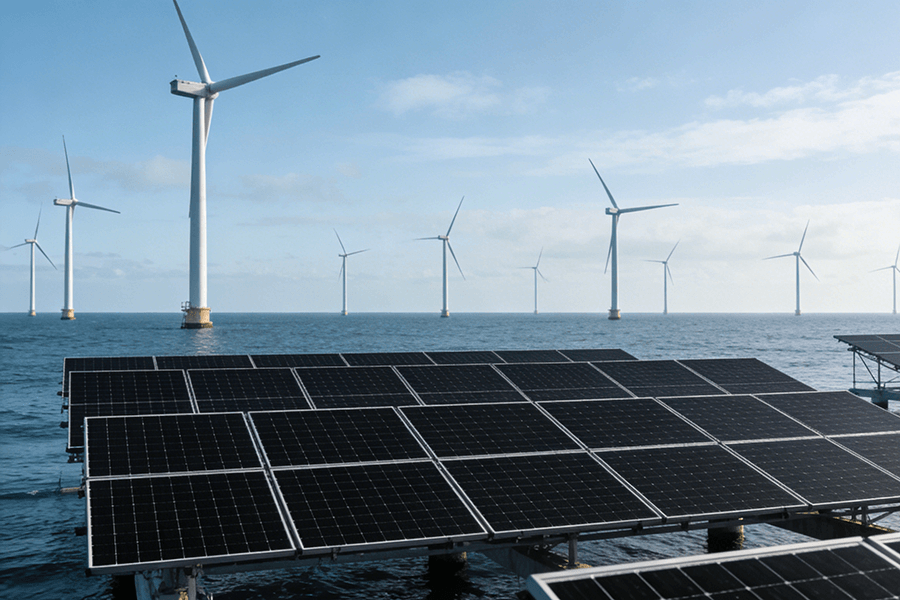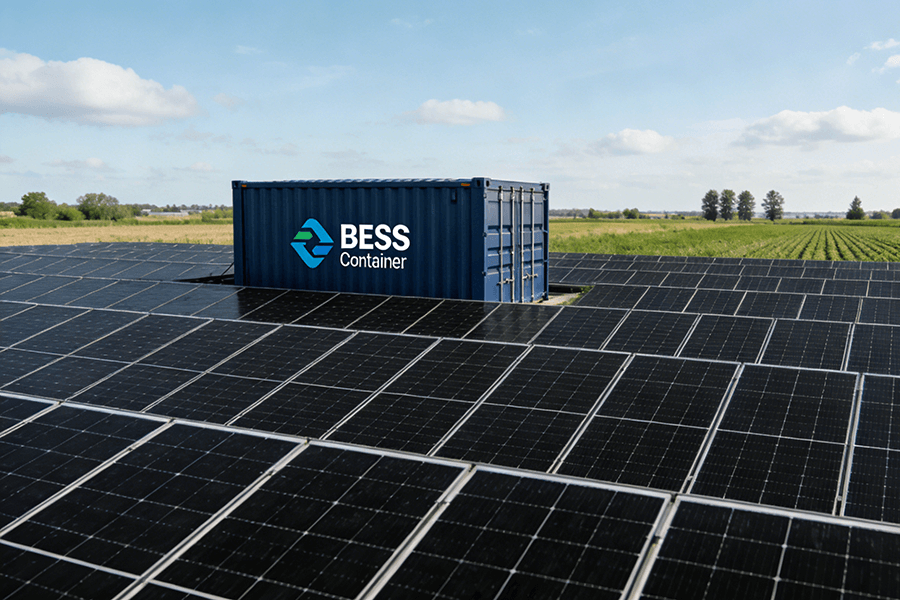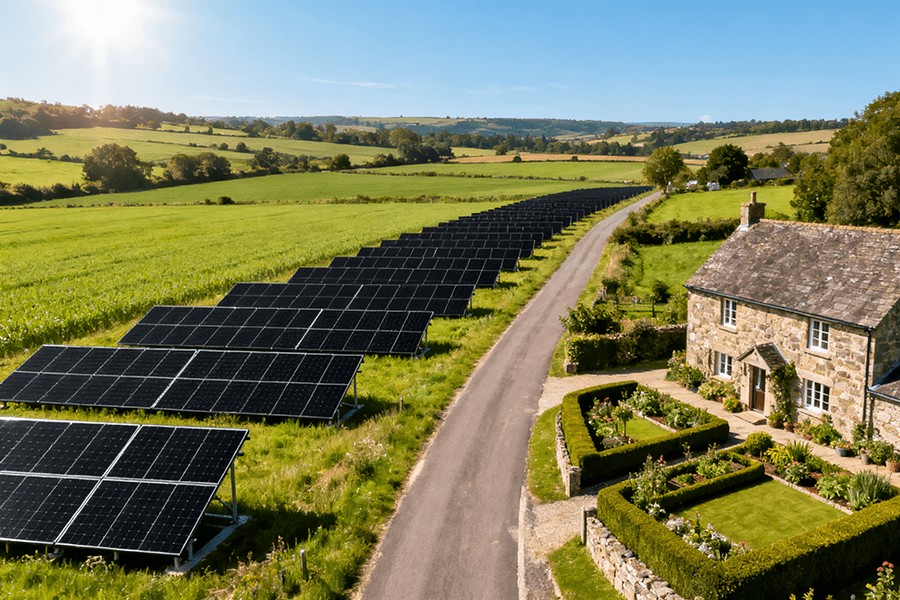
The Rural Energy Divide—Numbers Don’t Lie
While European cities bask in the luxury of 99.9% grid reliability and relatively affordable electricity, rural areas are mired in a starkly different reality. Picture a Bulgarian farmer mid-harvest, machinery suddenly grinding to a halt as the power cuts out, threatening to spoil an entire season’s worth of crops. Or envision a guesthouse owner in Portugal, left scrambling to serve dinner by candlelight as darkness descends on a busy evening due to an unexpected outage. These aren’t scenes from a dystopian novel—they’re the daily challenges faced by millions across Europe’s countryside.
Key data paints a sobering picture of the rural energy crisis:
- Frequent Power Outages: According to the European Commission’s 2024 Rural Energy Report, a staggering 15% of rural households in Eastern European countries such as Romania, Hungary, and Bulgaria endure weekly power outages that stretch beyond two hours. These disruptions aren’t just inconvenient; they can have far-reaching economic implications, from crop losses to business closures.
- Exorbitant Electricity Costs: Rural consumers across the EU face a significant price disparity, with electricity bills averaging 20–30% higher than those in urban areas. On remote islands like Greece’s Crete, the situation is even more dire, with residents paying up to €0.35/kWh—nearly double the urban average of €0.18/kWh, as reported by Eurostat 2025. This financial burden disproportionately affects low-income rural families and small businesses, further exacerbating regional inequalities.
Against this backdrop, the EU Rural Pact (2021–2030) emerges as a beacon of hope, with a bold mission to ensure “universal access to affordable, clean energy” for rural communities. At the forefront of this initiative are Battery Energy Storage System (BESS) containers—compact, mobile, and scalable storage units that seamlessly integrate with renewable energy sources. In regions where grid expansion is prohibitively expensive or logistically unfeasible, BESS containers step in as “energy first responders,” providing a reliable and sustainable solution to the rural energy conundrum.
Solving Rural Energy Pain Points: BESS Containers in Action
BESS containers address rural Europe’s top two energy grievances: poor grid access and high costs. Below’s how they deliver results—backed by real projects.
Improving Grid Access: Mini – Grids for Hard – to – Reach Areas
Extending the main power grid to mountain villages or remote islands can cost €500,000–€2 million per kilometer (IRENA 2024). This exorbitant infrastructure investment creates a significant barrier to reliable energy access for rural communities. BESS containers offer an innovative alternative by integrating with small – scale solar and wind generation systems, forming self – sufficient “mini – grids” that can operate independently or in tandem with the main grid.
Case Study: Polish Mountain Village (Zakopane Region)
Nestled in the Tatra Mountains, this Polish village faced decades of energy insecurity due to its challenging terrain. The existing grid infrastructure, characterized by outdated and overstretched lines, led to frequent blackouts—occurring up to five times a week. These disruptions severely impacted daily life, local businesses, and economic development opportunities.
- Challenge: Intermittent power supply resulting from an aging and overburdened grid, exacerbated by the region’s harsh weather conditions and geographical isolation.
- Solution: In 2023, a transformative project was implemented, featuring a 2MW solar array paired with a 4MWh BESS container. This setup enabled the village to generate and store its own electricity, reducing dependence on the unreliable main grid.
- Outcome: The installation achieved a dramatic improvement in energy reliability, providing 24/7 stable power to 300 households and 12 local businesses. The BESS container acts as a buffer, storing excess solar energy generated during the day and releasing it during periods of high demand, such as after sunset or during storms. This has effectively eliminated the chronic “lights out” situation, fostering a more stable and prosperous community.
Lowering Electricity Costs: Peak Shaving = Big Savings
Rural communities often face higher electricity costs, particularly during “peak hours” (7–10 AM and 6–9 PM), when grid demand surges. This price premium disproportionately affects households and small businesses with limited budgets. BESS containers offer a strategic solution to this challenge through a process known as peak shaving, which involves charging the battery during periods of low electricity demand and discharging it during peak hours.
Here’s how the cost – saving mechanism works:
- Off – Peak Charging: BESS containers are charged during off – peak hours (10 PM–6 AM), when electricity prices are typically 40–60% lower. This takes advantage of surplus energy on the grid, which would otherwise go to waste.
- Peak – Hour Discharge: During peak hours, instead of drawing power from the grid at high rates, the stored energy in the BESS container is discharged. This reduces reliance on expensive peak – hour electricity, resulting in significant cost savings.
Table 1: Cost Savings from BESS Deployment—Portuguese Rural Cooperative
| Metric | Pre – BESS (2022) | Post – BESS (2024) | % Reduction |
|---|---|---|---|
| Annual Electricity Cost | €450,000 | €330,000 | 26.7% |
| Average Monthly Bill (Per Household) | €75 | €58 | 22.7% |
| Peak Hour Energy Price Paid | €0.32/kWh | €0.12/kWh (stored) | 62.5% |
The Portuguese rural cooperative, representing 500 households, exemplifies the financial benefits of BESS deployment. After installing a 3MWh BESS container, the cooperative achieved annual savings of €120,000. For individual families, such as those running small bakeries, these savings translate to an additional €288 per year—funds that can be reinvested into business expansion, equipment upgrades, or other critical needs. This not only eases the financial burden on rural residents but also stimulates local economic growth.
Supporting Rural Industry Development: Powering Growth
Unreliable energy doesn’t just inconvenience households—it cripples rural industries. BESS (Battery Energy Storage System) containers, however, act as game – changers by providing the stability needed for businesses to thrive, whether in the realm of fruit processing or eco – tourism.
Powering Small – Scale Industries: No More Production Disruptions
Rural industries, such as food processing and handicrafts, are inherently dependent on consistent power supply. A mere one – hour outage can have catastrophic consequences, leading to the spoilage of perishable goods worth thousands of euros. For instance, in the case of cheese or fruit preserves, a single disruption can result in the loss of €10,000 worth of products. Similarly, in artisanal production, an outage can derail an entire day’s work, causing significant financial and productivity losses.
Case Study: Hungarian Fruit Processing Plant (Debrecen)
| Aspect | Details |
|---|---|
| Challenge | The plant faced 2–3 power outages per month, which led to 15% of fruit batches spoiling. This translated to an annual cost of €80,000. |
| Solution | In 2023, a 1MWh BESS container was installed and integrated with the existing 500kW solar panels. This combination aimed to store excess solar energy during peak production and deploy it during outages or low – solar – generation periods. |
| Outcome |
The implementation of the BESS container brought about remarkable results. There was a 40% reduction in production losses, with outages now occurring only once every three months. The plant’s output increased by 25%, and it was able to operate 24/7 shifts—an operational milestone that was previously unattainable.
|
Enabling Agri – Tourism: Energy Security = More Guests
Eco – tourism is a booming industry in Europe, with an annual market value of €50 billion (as per WTTC 2025). However, rural resorts often find it challenging to position themselves as “sustainable” destinations without a reliable source of clean energy. BESS containers offer a viable solution by enabling 100% energy self – sufficiency, thereby enhancing the appeal of these resorts to environmentally – conscious travelers.
Case Study: Swedish Eco – Resort (Lapland)
| Aspect | Details |
|---|---|
| Challenge | Prior to the installation of a BESS system, the resort relied on diesel generators for backup power. This not only incurred high operational costs but also had a negative environmental impact. Moreover, the resort lost 15% of its bookings due to “unreliable energy” reviews from guests. |
| Solution | In 2024, the resort installed a 500kW solar array in conjunction with a 1MWh BESS container. The solar panels generated electricity during the day, while the BESS container stored the excess energy for use during nighttime or periods of low solar irradiance. |
| Outcome |
The new energy system achieved 100% energy self – sufficiency, eliminating the need for diesel generators. This led to a 30% increase in bookings, with 78% of guests specifically citing “sustainable, reliable energy” as a key factor in their decision to choose the resort. As a result, the resort’s annual revenue increased by €180,000.
|
Policy Support and Rural Integration: Making BESS Accessible
BESS containers work best when paired with supportive policies and community ownership. The EU and local governments are stepping up with funding and frameworks to accelerate adoption, creating a symbiotic relationship between regulatory support and grassroots initiatives. This dual – approach not only eases the financial burden of implementation but also fosters long – term sustainability and community engagement.
EU Policies: Grants and Prioritization
The EU’s multi – tiered policy framework provides significant financial backing for rural BESS projects, effectively reducing upfront costs for communities and incentivizing the transition to sustainable energy. Two key initiatives are driving this transformation:
- European Agricultural Fund for Rural Development (EAFRD): As a cornerstone of EU rural energy strategy, EAFRD offers 50–70% grants for energy storage projects in rural areas. This funding mechanism has proven transformative for communities facing high energy costs and grid connectivity challenges. For instance, in 2023, a village in Finland’s Kuopio region leveraged EAFRD support to secure €350,000—70% of the total cost—to install a 2MWh BESS. This investment not only stabilized local energy supply but also positioned the village as a model for sustainable energy adoption (EAFRD, 2024).
- Clean Energy for All Europeans Package: This landmark legislation mandates that EU member states prioritize rural mini – grid projects, particularly those integrating solar power with BESS technology, within their national energy plans. By 2025, 15% of all EU energy funding allocated to renewables must be directed towards rural areas, ensuring equitable access to clean energy across the continent (European Commission, 2025). This directive aligns with the EU’s broader goal of achieving climate neutrality by 2050 while addressing the unique energy needs of remote communities.
Community – Led BESS Models: Keeping Benefits Local
Top – down energy projects often struggle to gain community acceptance and long – term viability. In contrast, community – owned BESS models empower residents to take an active role in their energy future, ensuring that the benefits of energy storage remain within the local economy. Under these models, residents typically invest small sums—ranging from €500 to €2,000—to co – own the BESS container. In return, they receive a share of the annual profits or savings generated by the system.
Case Study: Finnish Village (Kuopio Region)
| Aspect | Details |
|---|---|
| Model Overview | In 2022, 200 households in a Kuopio – region village each invested €1,000 to install a 1.5MWh BESS, creating a community – owned energy storage solution. |
| Financial Impact | The system generated annual savings of €80,000 through reduced energy costs, which were distributed equally among households, amounting to €400 per family. Additionally, surplus energy powered the village community center, cutting its annual energy bill by €12,000. |
| Socio – economic Benefits | Beyond financial savings, this model fostered “energy democracy,” giving residents direct influence over local energy generation, storage, and distribution. It also strengthened community cohesion and served as a catalyst for other sustainable development initiatives. |
This community – led approach demonstrates that BESS technology can be a powerful tool for rural empowerment, enabling communities to achieve energy self – sufficiency, reduce carbon emissions, and drive local economic growth.
Conclusion: BESS Containers = Rural Energy Equity
BESS containers aren’t just a technology—they’re a tool for justice. They turn the EU Rural Pact’s promises into tangible results, addressing the energy inequality gap that has long marginalized remote communities. By deploying these modular energy storage solutions, the EU can:
- Reliable power: Provide a stable electricity supply to households in regions prone to blackouts. For example, in the Greek island of Crete, BESS installations reduced power outages by 65% within six months of implementation, according to a 2024 study by the European Renewable Energy Council. This reliability is crucial for maintaining basic services, running medical equipment, and powering essential communication devices.
- Lower costs: Alleviate the financial burden on families and businesses struggling with high energy bills. BESS systems can store excess renewable energy generated during the day—such as solar or wind—and discharge it during peak demand periods, reducing reliance on expensive grid electricity. In a case study from rural Sweden, local businesses saw a 22% decrease in monthly energy costs after integrating BESS containers into their operations.
- Growth: Foster economic development by enabling energy-intensive industries—such as food processing, tourism, and light manufacturing—to thrive in rural areas. Reliable and affordable energy is a fundamental requirement for attracting investment, creating jobs, and boosting local GDP. In Ireland’s Connemara region, a BESS project supported the expansion of a local seafood processing plant, resulting in 30 new jobs and a 15% increase in annual production.
But there’s more work to do. To accelerate the adoption of BESS containers in rural Europe, EU policymakers should implement the following targeted interventions:
- Increase EAFRD grants: Raise the European Agricultural Fund for Rural Development (EAFRD) subsidy to 70–80% for remote areas, including islands, mountain villages, and sparsely populated regions. This financial incentive would significantly reduce the upfront costs for local governments, cooperatives, and private enterprises, making BESS projects more financially viable.
- Simplify permit processes: Streamline the bureaucratic hurdles associated with BESS installations, which currently take 6–12 months to complete in most EU countries. By creating standardized application procedures, establishing fast-track approval mechanisms, and providing online platforms for permit submissions, policymakers can expedite project implementation and reduce administrative burdens.
- Fund training programs: Invest in vocational training initiatives to empower local workers with the skills needed to install, operate, and maintain BESS systems. These programs should include hands-on training, certification courses, and apprenticeships, creating high-quality jobs while building a sustainable pool of local expertise. For instance, a similar training program in Scotland led to a 40% increase in the number of local workers employed in the renewable energy sector within two years.

